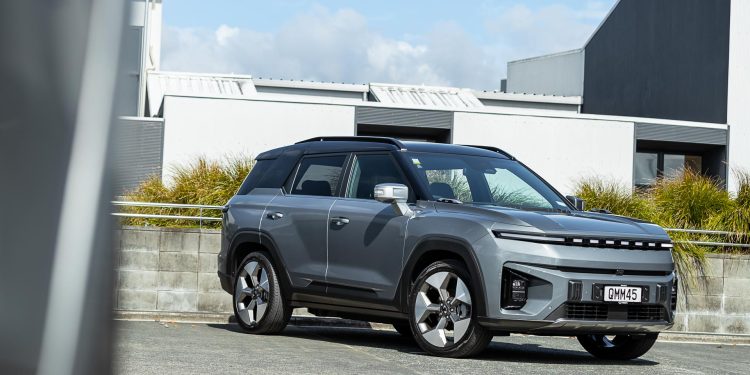2024 KGM Torres EVX review
Words: Peter Louisson | Photos: Isaac Western
Following a global rebranding, KGM nee SsangYong, launches here with the Torres EVX, a medium-sized electric crossover.
New brands you can pretty much bank on as being Chinese these days, and yet the latest newcomer to our market is from Korea. KGM (KG Mobility) arises, phoenix-like, from the ashes of SsangYong. The new entity is a division of industrialist KG Industries.
Following the local rebranding, KGM has launched its first new model, Torres, and we’ve been driving the electric version, dubbed EVX. Torres, the name, derives from the Latin turris, means ‘towers”.
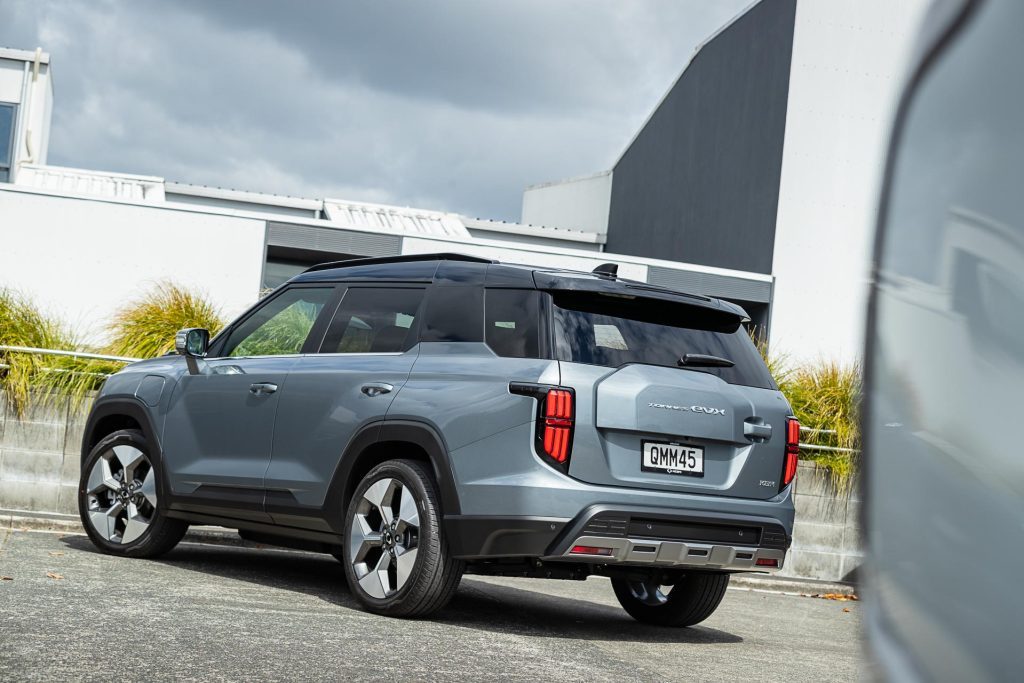
Perhaps that’s a reference to its lofty height, for this is 1720mm tall, offering generous headroom for its rear seat occupants. It is a medium crossover, being 4700mm long and 1890mm wide.
Styling is relatively crossover conventional, though the lightshow at start up reminds of Kitt from Knight Rider. There are a couple of other unusual styling elements too.
The exterior features hand grips on either side of the bonnet. You can’t actually get your fingers into them so we’d suggest they’re styling features.
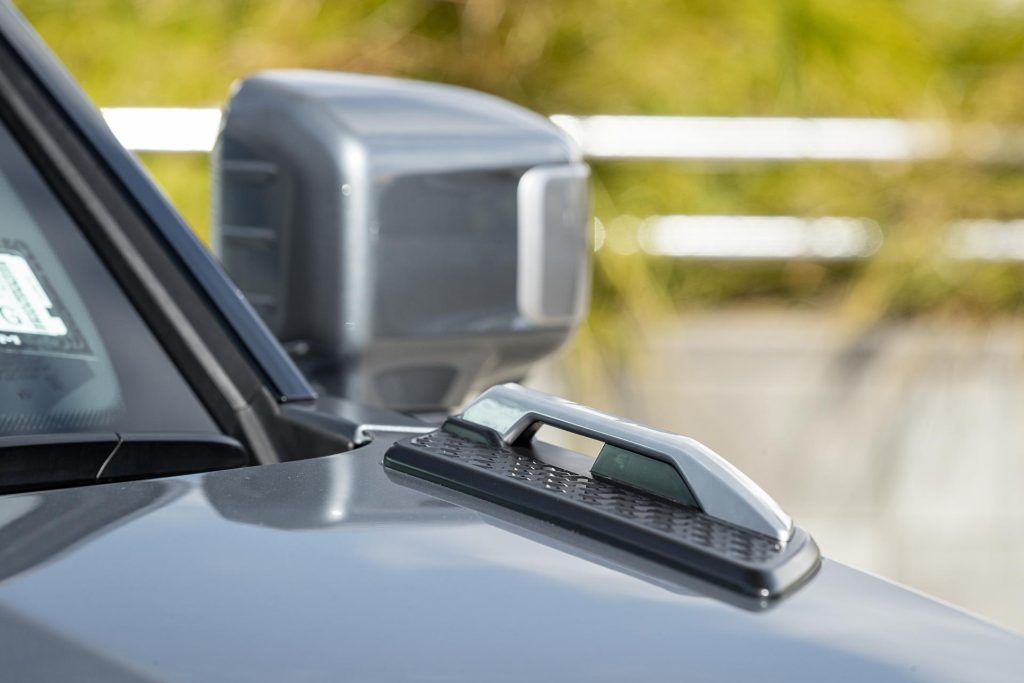
Equally distinct, at the rear of the vehicle is what seems to be the upper half of a spare wheel cover attached to the fifth door, again an off-road styling feature. Not that this front driver will be doing a lot of that but they do give it a can-do look.
Alongside the faux spare wheel cover is a horizontal handle, suggesting a fifth door that is side-hinged but it’s a trick – this is a regular, vertically oriented hatch, power operated.
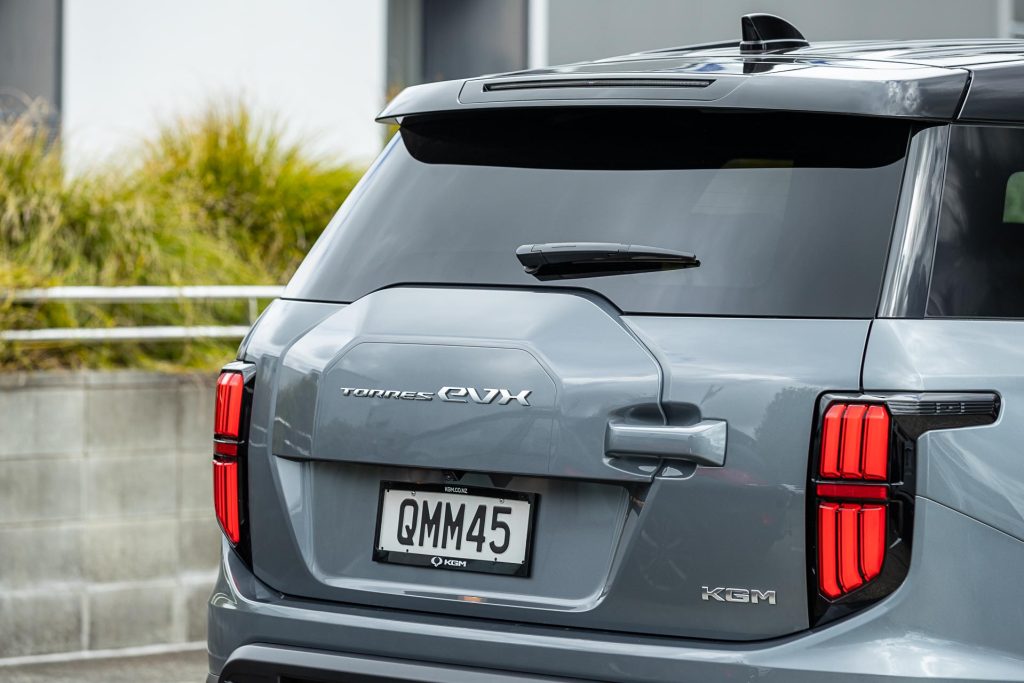
Inside, there’s a generous hold of 703L, expanding to 1662L with the second-row seats out of action, the resulting load space essentially flat. Under the floor is a space for charging cables or valuables.
There’s no emergency charger, although KGM is working with EVnex to offer a wall charger for under $3k, plus fitting.
Only you can buy wall chargers now for well under $1000.
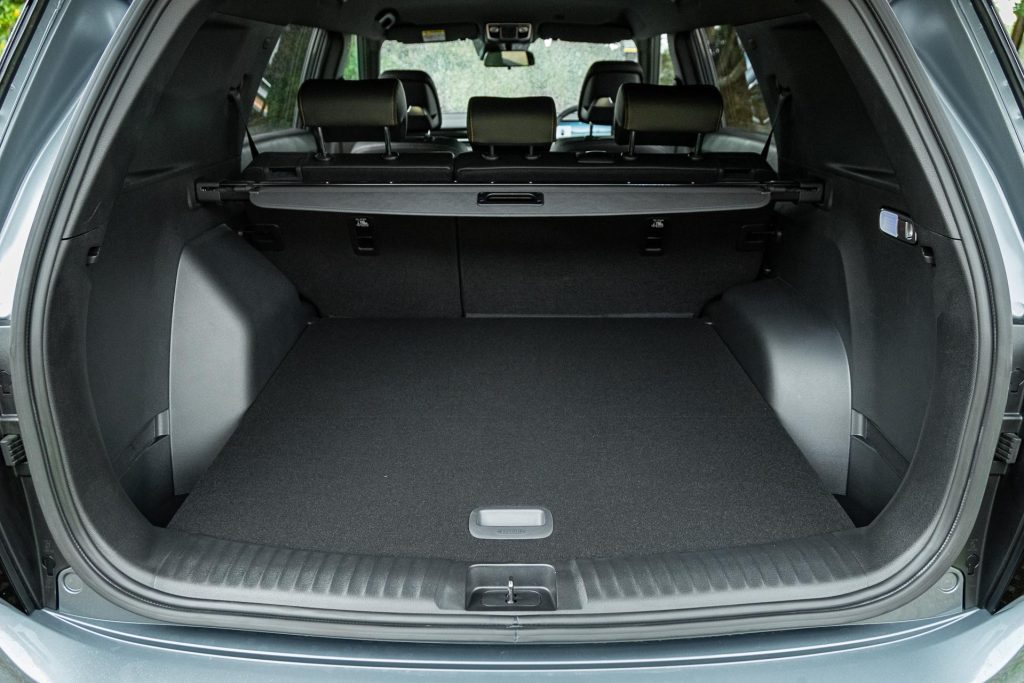
Torres family of three
Two other Torres variants are arriving imminently. They’re powered by a 1.5-litre turbocharged four-cylinder engine making 120kW and 280Nm of torque, mated to a six-speed automatic.
In other words, they share the SsangYong Korando and Tivoli powertrain.
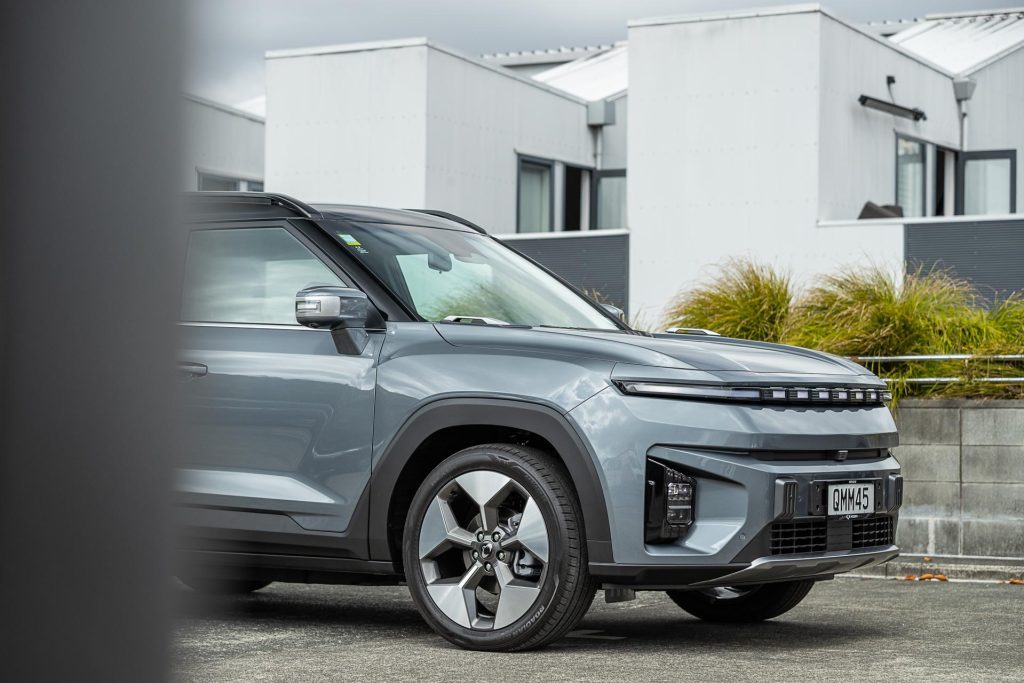
The base model front-drive Torres will go on sale at $49,990, while a more upmarket leather-clad part-time four-wheel drive variant adds $5000. All three Torres models have 1500kg braked and 500kg unbraked towing capacities.
Our fully electric EVX tester has a $67,990 ask, although the first 40 customers get a grand off, at $66,990. That puts it right in Tesla Model Y territory.
EVX features a front-mounted 152kW/339Nm motor that powers the leading axle, and is supplied by a 73.4kWh battery offering a WLTP-rated range of up to 462km.
We saw 426km with a full battery which is of the lithium-ion phosphate BYD Blade variety. It comes with a 10-year and one million km warranty. Mean energy use was around 20kWh/100km, closer to 18 on motorways.
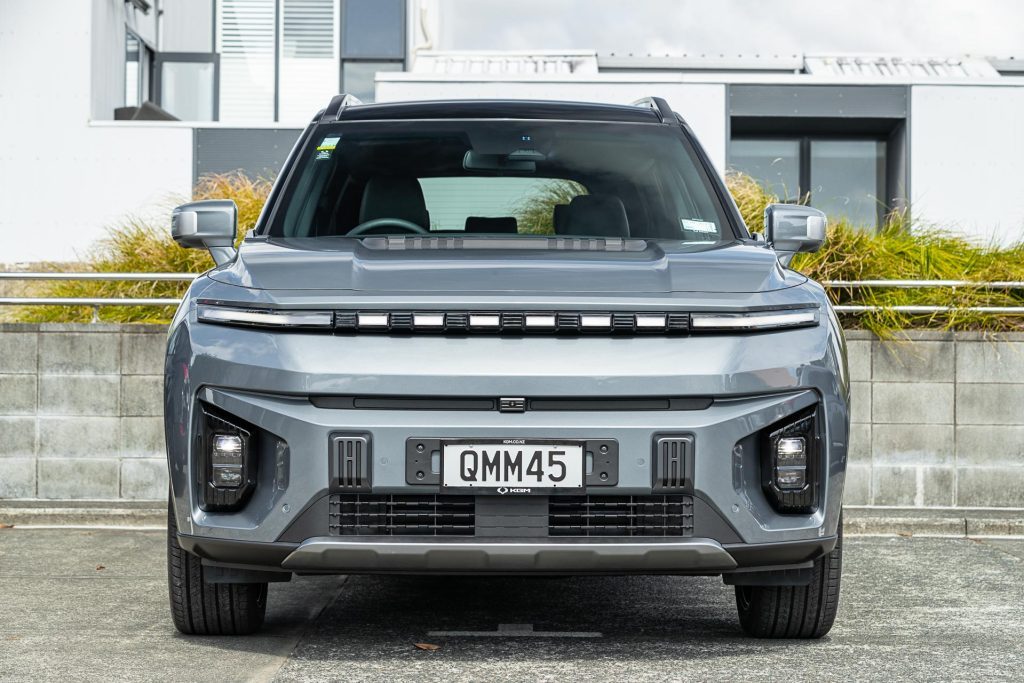
The EVX can handle DC fast chargers rated at up to 145kW so a rezip from 10 to 80 per cent takes a little over half an hour.
Its battery can also be used as an emergency power bank during outages thanks to the model’s vehicle-to-load (V2L) function.
In the boot under the floor lives the converter that hooks into the charge port and at the other end is a three-pin outlet.
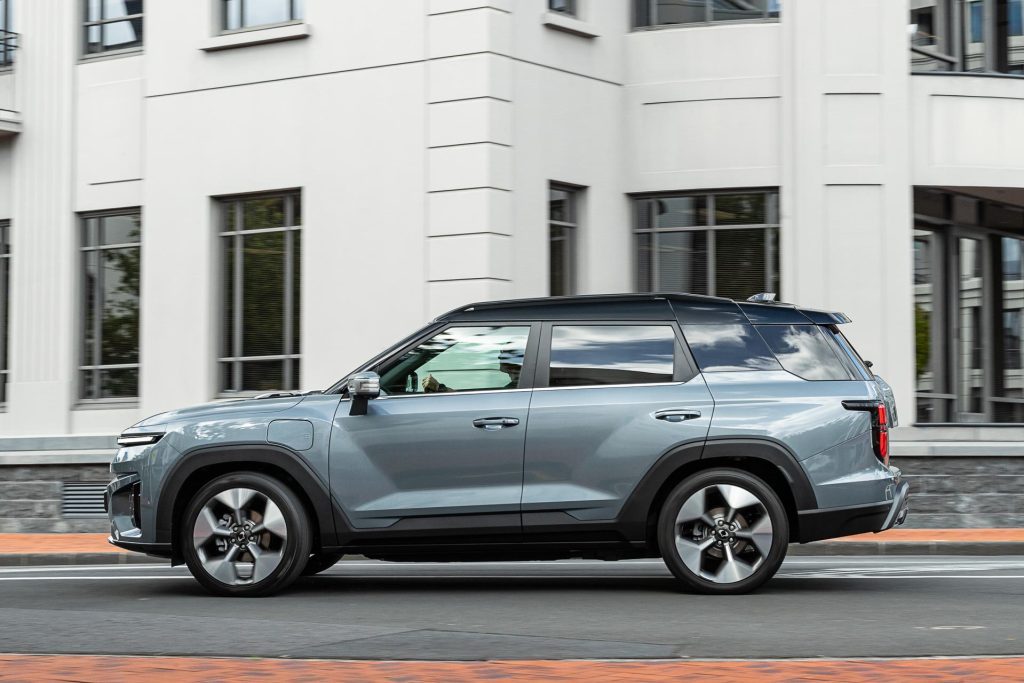
Attractive interior
Step inside and the cabin is minimalist in that typical EV way, with a pair of 12.3-inch displays that light up to a symphonic entrance. It’s a similar scenario at shutdown.
You can silence these, but there’s an external ditty that persists. With a 2680mm wheelbase, there’s plenty of occupant space in the rear where there are also two USB-C ports.
On the rear of the front seat headrests are two slots, presumably holders for iPads and the like.
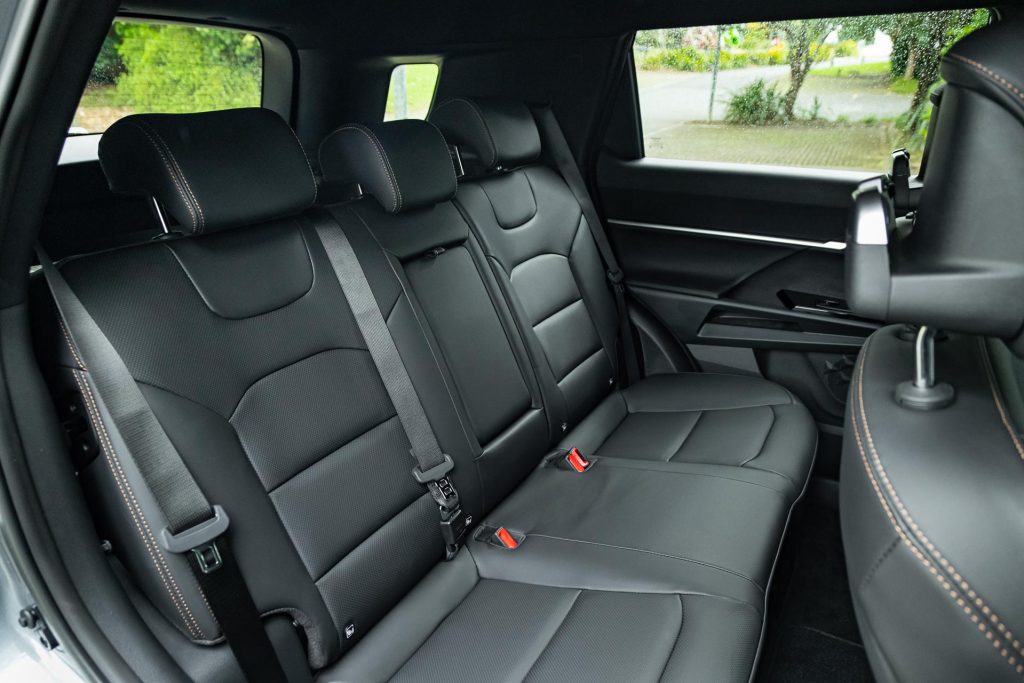
On the wheel the old SsangYong double-dragon emblem remains, about the only vestige of the former company. Copper-coloured trim highlights make for an interesting point of difference.
The left-hand part of the widescreen display supports Apple CarPlay and Android Auto connectivity, along with Bluetooth, DAB radio, and a six-speaker sound system.
Swipe left from the right side and the AC controls emerge. You can then swipe up or down for additional information.
A vertical swipe from the top of the screen pulls down another menu for various bits and bobs but it retracts too quickly. Conversely, the infotainment takes its good time to fire up.
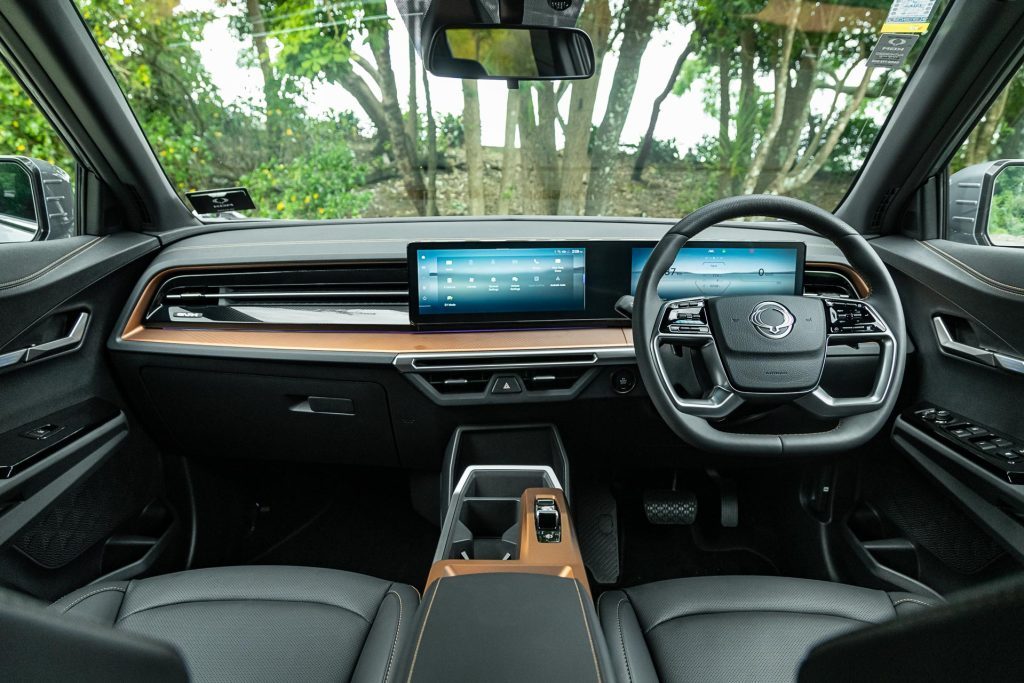
We found the infotainment screen to be glitchy; it shut off on occasion for no reason, and another time wouldn’t start up.
Moreover, we could turn off most of the annoying safety items like the lane keeping and centring that tug at the wheel too much, but the driver fatigue warning drove us nuts. It would activate for no good reason, chime eight times and then repeat itself three minutes later.
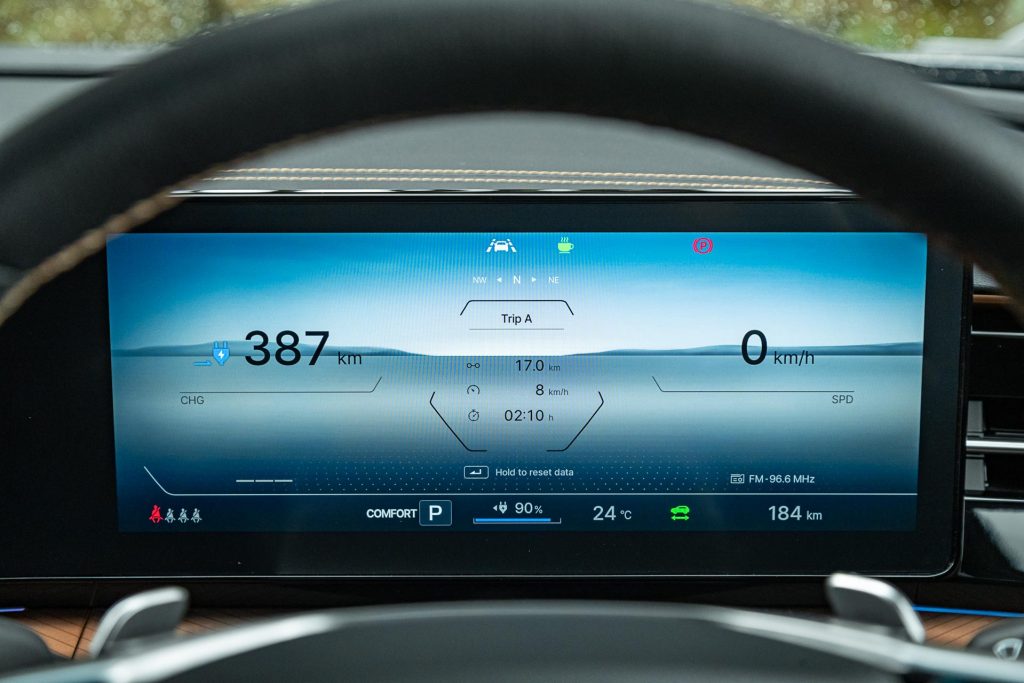
I tried driving with eyes wide open to show I was awake with zero effect. After our test, KGM told us it was aware of the issue with the driver fatigue warning and the factory has issued a service update.
The repetitive cell phone charging alert is just about as annoying, though is easily silenced by moving the offending item. Hopefully they can rectify this too.
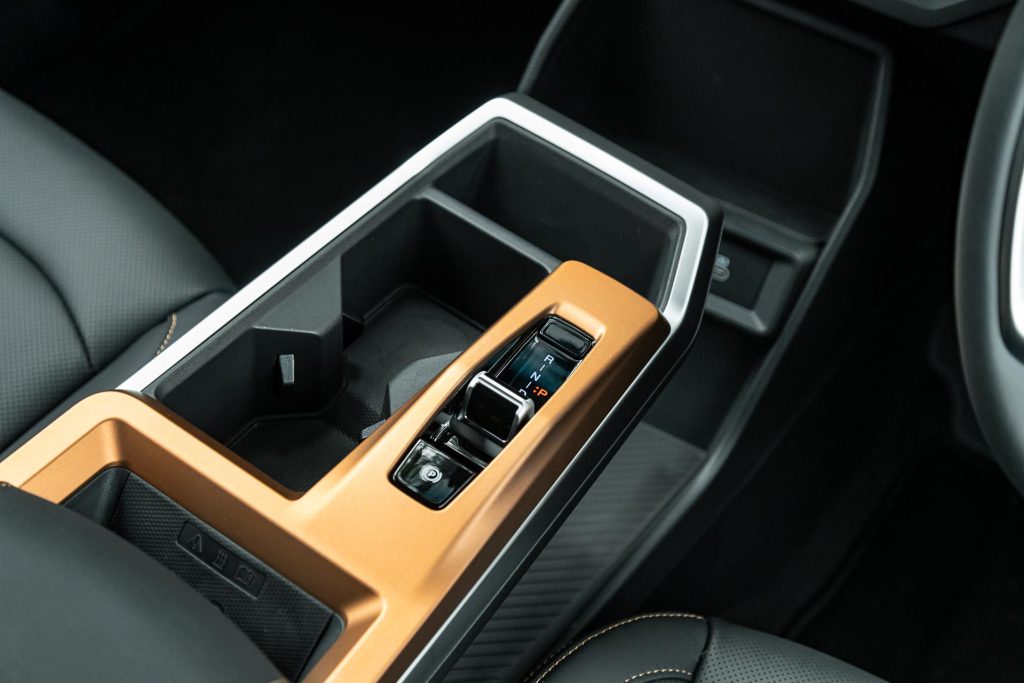
Almost fully featured
As to fit out, this misses out on navigation and traffic sign recognition but comes standard with faux leather trim, a heated wheel, adaptive cruise, climate air, heated and cooled seats up front (heated in the rear), lane-change assist and keeping, rear collision and cross-traffic alerts, and Eco, Sport and Normal drive modes, accessed annoyingly via the touchscreen.
Fortunately Normal is all you really need; EVX easily overtakes slower traffic with a quick prod on the go pedal.
There are paddles attached to the wheel for adjusting motor regen, with three different levels, though they’re hard to decipher on screen. But all three settings are well chosen, the third almost a one-pedal braking scenario.
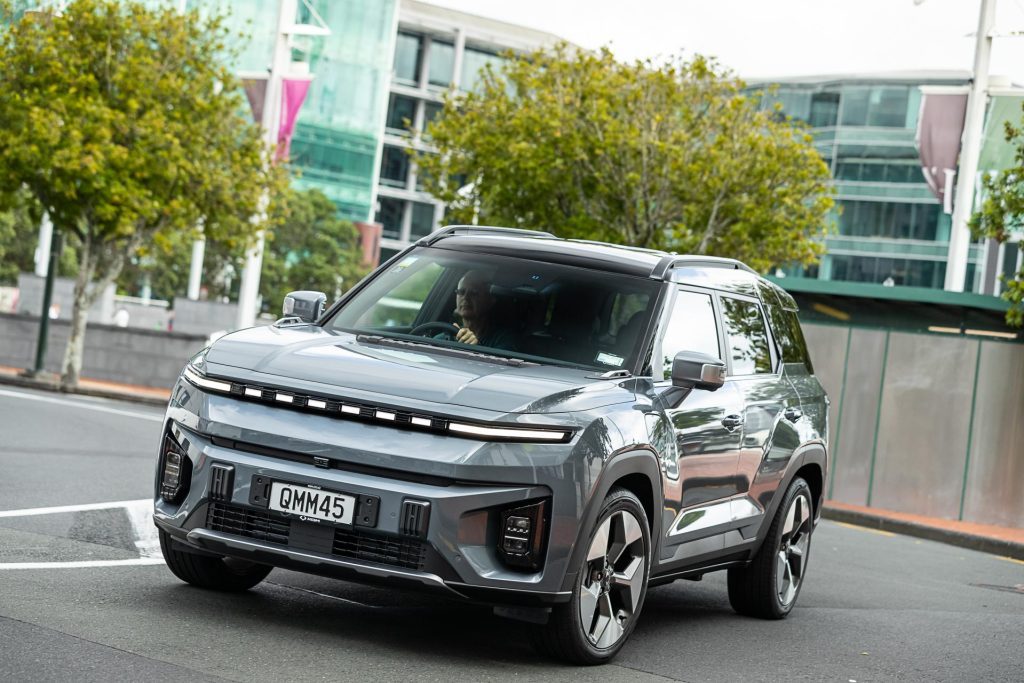
An unusual feature is an AC setting that keeps the pooch cool when you park up and are out running errands.
For the first couple of days in the EVX we were running around town where it exhibits an okay turning circle of 10.8m, and good all-round visibility.
Off the mark it isn’t lightning fast like some EVs; think smooth acceleration away from stopped but it handily eclipsed its claimed 0-100 time of 8.1sec. Not initially; we turned off TC and it spun up the fronts with gay abandon.
The best run was with TC back on, at 7.6sec. On the noise front, it is typically EV quiet, the worst recording just above the 70dB mark.
Ride is soothing enough despite the big 20-inch rims but handling less so.
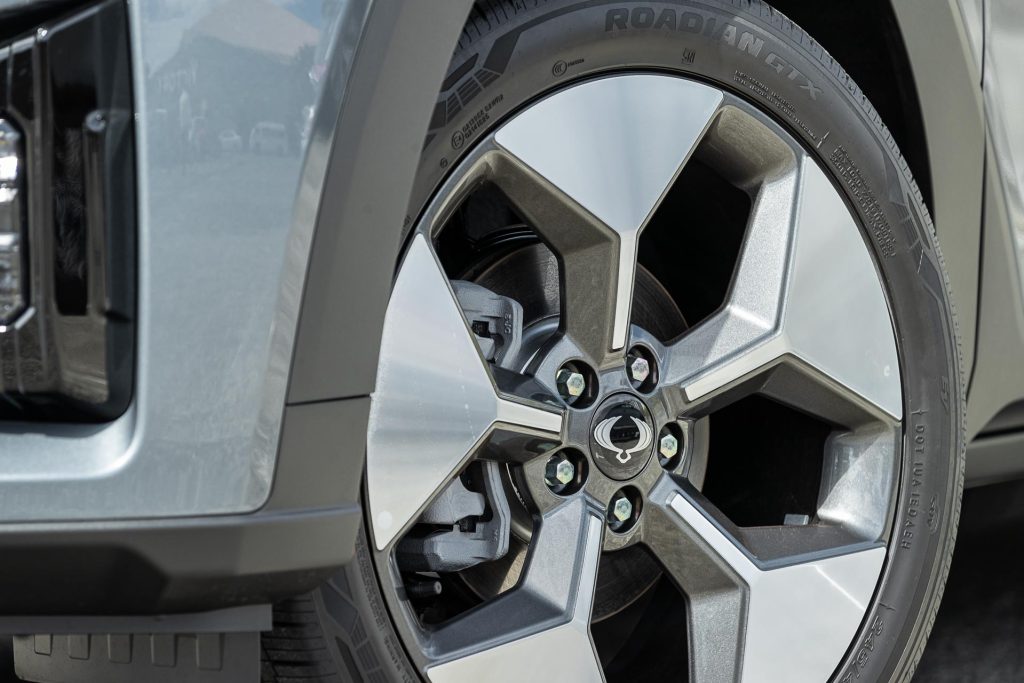
There’s a bit much kickback through the wheel, along with some torque steer, and understeer is fairly easily uncovered, the Nexen tyres seemingly oriented more for battery range than corner carving.
But then this is a family hauler, so a soothing ride is more appropriately the priority, as is a crash test figure. While KGM assures it is five-star ready, no international ratings have been undertaken to date.
Overall, the EVX comes across as a promising if hasty first effort. Hopefully the glitchy infotainment and hyperactive driver fatigue and charging alerts are simple software fixes.
On spec and sizing, the Torres EVX runs up against Tesla Model Y, as mentioned, along with more expensive EVs like bZ4X and the Subaru Solterra, and others from the continent.
Aside from a few minor irritations that will likely be put right quickly, probably its main shortcoming is that the brand is an unknown quantity to most.
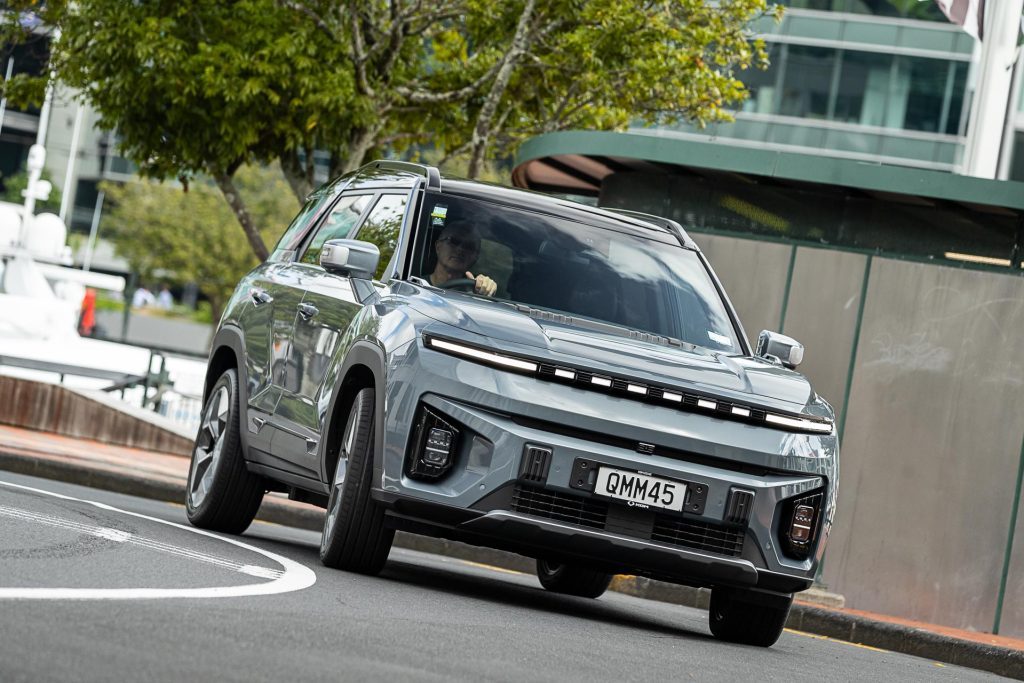
Undergoing ANCAP and other crash testing may help in that regard. Meantime, having various powertrain options available at different price points gives Torres broader appeal in the country’s biggest new vehicle sector. And a five-year/150,000km warranty instills confidence.
Spinning off from Torres is a coupe variant, along with an electric ute, both due within the coming year. There is also a hybrid powertrain under development.
| Model | KGM Torres EVX |
| Price | $67,990 |
| Motor | 152kW, 339Nm |
| Battery | 72kWh net |
| Range | 462km |
| Drivetrain | Single-speed auto, FWD |
| Energy Use | 18.7kWh/100km |
| C02 Output | 0g/km |
| 0-100km/h | 7.61sec |
| 80-120km/h | 5.22sec (148.9m) |
| 100-0km/h | 37.52m |
| Stability systems | ABS, ESP |
| Safety | AEB, ACC, BSM, LDW, RCTA, ALK, AHB |
| Luggage capacity | 703-1662L |
| Tow rating | 500kg (1500kg braked) |
| Tyre size | f/r – 245/45R20 |
| Warranty | 5yrs, 150,000km |
| ANCAP rating | Not yet rated |
| Weight | 1915kg (claimed) |
This story first appeared in the May 2024 issue of NZ Autocar magazine.


